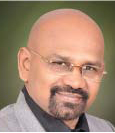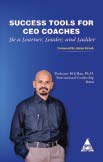Leadership Lessons: See the big picture
By Professor M.S. Rao, Ph.D., international leadership guru and author of 30 books
 Today’s successful CEOs understand that seeing “The Big Picture” can help avert organizational challenges and overcome them. Visionary CEOs like Richard Branson, Warren Buffett, and Lou Gerstner all have an innate ability to see the big picture — i.e., they could see what others could not.
Today’s successful CEOs understand that seeing “The Big Picture” can help avert organizational challenges and overcome them. Visionary CEOs like Richard Branson, Warren Buffett, and Lou Gerstner all have an innate ability to see the big picture — i.e., they could see what others could not.
THE IMPORTANCE OF CONCEPTUAL SKILLS
Social psychologist Robert Katz says that each of the three levels of management — low, middle, and top — has its own need for technical, human, and conceptual skills. For instance, at low-level management, more technical skills and fewer conceptual skills are needed. At the middle level, there is equal need for technical, conceptual, and human skills. And at the top level, there is more need for conceptual skills and less need for technical skills as the leaders become involved in strategic management. The need for human skills (i.e., the ability to work well with others), however, is evident at all levels of management. Hence, leaders and chief executives must possess conceptual skills to see what cannot be seen by others, to have the vision to make decisions according to the big picture.
LEADERSHIP LESSONS FROM WARREN BUFFETT
Warren Buffett is one of the world’s richest men and the legendary chairman and CEO of the biggest shareholder company — Berkshire Hathaway. Some of his leadership lessons include:
- BE A VORACIOUS READER
He reads and reflects a lot. He reflects on the decisions he made in the past to assess and improve on present conditions. - BE PATIENT AND PERSISTENT
He has lots of patience. He is expert in numbers and analyzes them thoroughly. He doesn’t give up. - ARTICULATE YOUR IDEAS AND INSIGHTS EFFECTIVELY TO OTHERS
He influences his team with his ideas and carries them along with him. - BE CLEAR AND STRONG IN FUNDAMENTALS
He is unmoved by market fluctuations. His investments are meant for long-term results. - LEAD A SIMPLE LIFE
He leads a simple living with high thinking. He still lives in the same house he originally purchased for just over $31,000, and he owns one car. He leads a frugal life and enjoys McDonald’s hamburgers and cherry Coke. - EMPHASIZE ETHICAL VALUES
He is very transparent in his dealings. He places more emphasis on “means” rather than “ends.” He once remarked, “It takes 20 years to build a reputation and five minutes to ruin it. If you think about that, you’ll do things differently.” - MAKE A DIFFERENCE IN THE WORLD
He shares his profits through philanthropic activities.
It is essential in the current competitive world to see the big picture to avert organizational challenges. Hence, leaders and CEOs must learn lessons from leaders such as Buffett to see the big picture to minimize organizational challenges and maximize organizational effectiveness.

